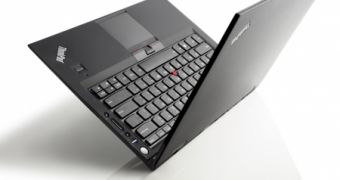Since its introduction at the beginning of this year, Intel's Thunderbolt technology has been slow to gain market acceptance and Lenovo believes that it will still take some time until this interconnect reaches mainstream, at least as far as notebooks are concerned.
Until this happens, USB 3.0 remains the main high-speed interface to be used in laptops, and Lenovo expects this technology to become mainstream in 2012.
"In 2012 USB 3.0 will be a mainstream technology," said Jason Parrish, worldwide product manager for Lenovo ThinkPad, in a phone interview with Cnet earlier this week.
"And we see 2011 as the transition year for USB 3.0 as it starts to come into more and more products," he added.
Just a week ago, Lenovo started selling the ThinkPad X1 ultra-thin notebook, which is based on Intel's high-performance Sandy Bridge Core i5 and i7 processors, and also sports a SuperSpeed USB 3.0 port capable of sustaining 5Gbps transfer speeds.
When asked about Thunderbolt, Parrish said, "It's definitely an interesting technology. It's clever to use the same connector as Mini Displayport."
However, he continued, "there's certainly not a desire to add more ports to a notebook, because it takes up space...We're talking to our customers...And assessing if Thunderbolt is the technology" they need.
Intel also seems to agree with this claim as the company believes Thunderbolt should start its life in high-end systems, before making it into mainstream computers.
The Thunderbolt technology was developed in order to provide a unified interface with enough bandwidth to replace all the current connection buses, such as SCSI, SATA, USB, FireWire or PCI Express.
Although this first iteration of Thunderbolt is still far away from reaching that goal, it still manages to join together the PCI Express and the DisplayPort interfaces and can provide, in theory, 20Gbps of upstream and 20Gbps of downstream bandwidth (via two 10Gbps bidirectional channels).
Since Thunderbolt was introduced, quite a few companies have announced their support for the technology, but, as we speak, the only devices to include this interface are Apple's 2011 Mac BookPro and iMac computers.

 14 DAY TRIAL //
14 DAY TRIAL //